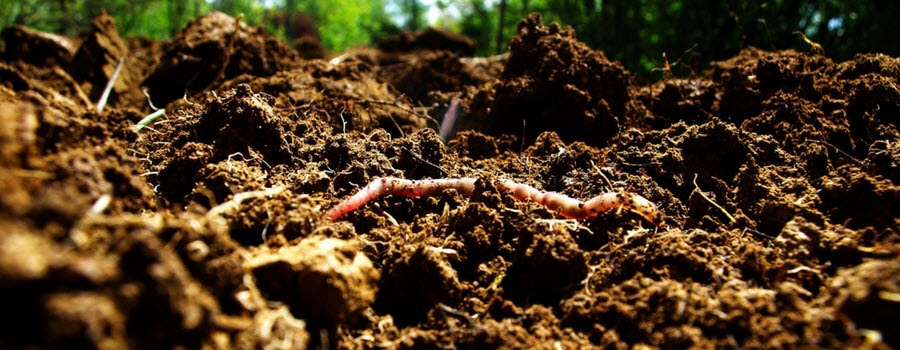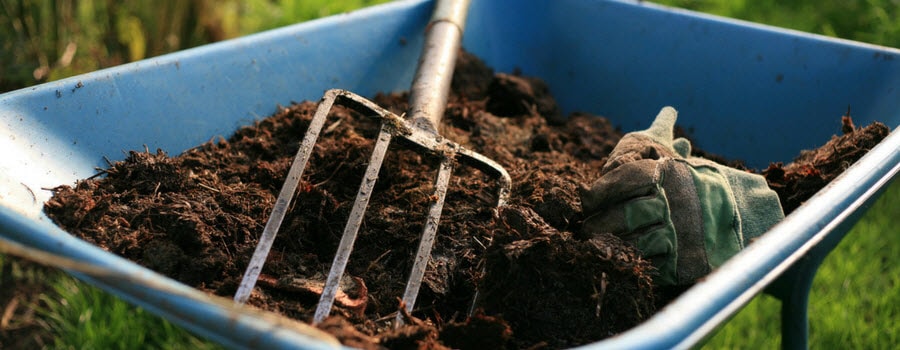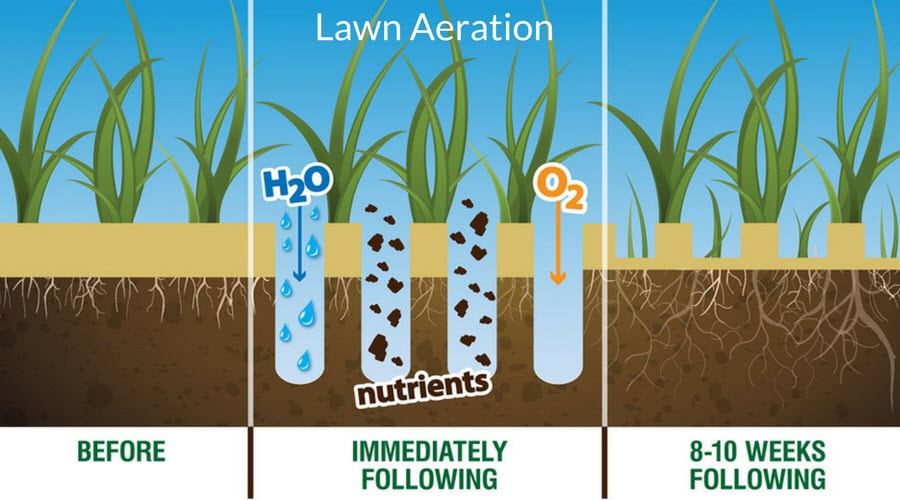Create a Healthy Lawn and Garden from the Ground Up
- horticulturist and gardening expertAugust 21, 2017
Boost the beauty and vitality of your lawn and gardens by building a foundation of healthy soil. Ideal soil is composed of mineral matter that contains nutrients, organic matter that holds nutrients and water for the plants to absorb and air spaces for drainage.
 Most of our lawns and landscapes grow on less-than-ideal soil. Many gardeners struggle with heavy compacted clay that is poorly drained. It dries slowly and limits oxygen in the soil. When sufficient air is lacking, plants are unable to absorb nutrients and water from the soil. Others are growing lawns and gardens in sand, gravel, or rock filled soils. These drain too quickly for plants to absorb needed water and nutrients. This means more frequent watering and fertilization is needed to maintain plants.
Most of our lawns and landscapes grow on less-than-ideal soil. Many gardeners struggle with heavy compacted clay that is poorly drained. It dries slowly and limits oxygen in the soil. When sufficient air is lacking, plants are unable to absorb nutrients and water from the soil. Others are growing lawns and gardens in sand, gravel, or rock filled soils. These drain too quickly for plants to absorb needed water and nutrients. This means more frequent watering and fertilization is needed to maintain plants.
Add Organic Matter
Whether you’re dealing with fast draining or heavy soils, organic matter is the solution. Organic matter adds nutrients but also improves drainage and aeration in heavy soil and increases water- and nutrient-holding capacity in fast draining soils.
Adding organic matter also builds the soil ecosystem. It increases the number and activity of beneficial soil organisms such as good bacteria, fungi, microorganisms, and insects.
Organic matter also improves water quality and the environment. The organic matter in amended soils acts like a sponge. More water is absorbed by the soil and less run off. This means less fertilizer and pesticides wash into nearby storm sewers, rivers and lakes.
Starting a New Lawn or Garden
Incorporate 3 to 4 inches of organic matter into the top 8 to 12 inches of soil when starting a new lawn, garden or amending an annual or vacant garden.
Improving an Existing Garden
But what about existing lawns and gardens that need a boost but are not bad enough to warrant starting over? You can still improve the soil and build a healthy foundation over time.
Spread a one to two-inch layer of compost over the soil surface of struggling perennial gardens. Use an auger bit to drill holes through the compost and into the soil in several places between existing plants. This moves compost into the root zone and aerates poorly drained soils.
 Fertilize perennials in need of a nutrient boost in spring with Milorganite. This all purpose slow release fertilizer will promote even top and root growth and will not interfere with flowering. Plus it contains 85% organic matter to continue improving your garden soil.
Fertilize perennials in need of a nutrient boost in spring with Milorganite. This all purpose slow release fertilizer will promote even top and root growth and will not interfere with flowering. Plus it contains 85% organic matter to continue improving your garden soil.
Use organic mulches such as shredded leaves and evergreen needles. These not only suppress weeds and moderate soil temperature, they also add organic matter to the soil as they decompose.
Existing Lawn: Core Aerate, Topdress with Compost, and Fertilize
Core aerate lawns growing on compacted or poorly drained soils. Aeration creates openings in the soil allowing water and nutrients to reach the grass roots. Spread a layer of compost over the aerated lawn for even greater benefit.
 Topdressing a recently aerated lawn may not be practical but fertilizing with Milorganite is. This slow release fertilizer contains 85% organic matter. So every time you fertilize your lawn you are feeding the soil organisms, improving drainage and increasing its water-holding ability.
Topdressing a recently aerated lawn may not be practical but fertilizing with Milorganite is. This slow release fertilizer contains 85% organic matter. So every time you fertilize your lawn you are feeding the soil organisms, improving drainage and increasing its water-holding ability.
Fertilizing with Milorganite is also good for lawns growing on fast draining soil. The organic matter helps retain moisture and the nutrients from the slow release Milorganite.
Start improving your lawn this fall. Fertilize your lawn with Milorganite around Labor Day. Northern gardeners can make another application around Thanksgiving before the ground freezes. Those growing warm season grasses should make their second fall application in early October.
Your efforts spent building a healthy soil foundation will be rewarded with a long-lived, healthy, beautiful and productive landscape.

